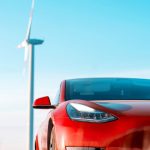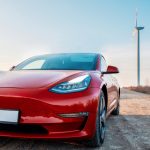Anticipation surrounds the electric vehicle market as BYD introduces the Yangwang U9 Track Edition, sparking discussion about the future of high-performance EVs. This new contender emerges just as global focus remains fixed on the long-awaited Tesla Roadster, which has experienced continual delays and speculation regarding its production. The confrontation between these two vehicles highlights growing competition among manufacturers aiming to lead the EV supercar segment, with enthusiasts questioning how established icons will respond to new and ambitious rivals.
Recent information about BYD’s Yangwang U9 Track Edition sets it apart from earlier reports about the U9 lineup, both in terms of technological ambition and competitive targets. Previous statements mainly focused on the bold design and four-motor configuration, but newer documentation reveals significant horsepower increases and performance enhancements. Details like aerodynamic modifications and optional features were not always highlighted in press releases from last year, suggesting the evolution of BYD’s strategy as rival brands, such as Tesla and Lotus, move forward with their own plans. Public expectations for EV supercars have grown, with references to the Rimac Nevera and Lotus Evija underscoring a rapidly shifting landscape. This context suggests an intensification of performance benchmarks with each new unveiling.
What Are the Main Features of the Yangwang U9 Track Edition?
The BYD Yangwang U9 Track Edition enters with a 2,977-horsepower, quad-motor setup, each motor independently powering one wheel. Unlike the standard U9, this Track Edition receives notable aerodynamic upgrades, including a carbon fiber rear wing, adjustable front splitter, and an optional adjustable rear wing and diffuser. These enhancements aim to improve stability and driving dynamics at high speeds. BYD commented on the new launch,
“The Yangwang U9 Track Edition represents our commitment to pushing performance boundaries within the electric vehicle market.”
How Does the U9 Compare to Other High-Performance EVs?
While the Track Edition’s horsepower far exceeds most competitors, it still falls behind in certain key specifications. The Tesla Roadster, widely anticipated for its rapid acceleration, is projected to achieve 0-60 mph in 1.9 seconds, which surpasses the U9’s estimated 2.3 seconds. Additionally, the Roadster is expected to deliver a top speed of over 250 mph and a range of 620 miles, compared to the U9 Track Edition’s 217 mph top speed and 280-mile range. These figures demonstrate trade-offs between raw power and overall efficiency. Tesla has stated,
“Performance and range remain at the core of our design philosophy for the upcoming Roadster.”
Can the U9 Track Edition Challenge the Tesla Roadster?
The Yangwang U9 Track Edition has set a new benchmark for power output among electric supercars, but the Roadster maintains competitive advantages in acceleration and long-distance capability. Additional features on the U9, such as advanced aerodynamics and customizations, may attract buyers seeking exclusivity and track-oriented performance. However, the lower projected range and lower top speed may limit its appeal for some enthusiasts who prioritize everyday usability and endurance.
Competition among high-powered electric vehicles is intensifying, with brands like BYD, Tesla, Lotus, and Rimac all pursuing leadership in this niche. Innovation in battery technology, design, and software integration continues to evolve the expectations for what an EV supercar can deliver. As both the Yangwang U9 Track Edition and Tesla Roadster progress toward potential production and real-world testing, comparisons are likely to drive further technical developments and inspire new benchmarks within the industry. Potential buyers and fans should consider not just headline horsepower but also the broader package, including range, acceleration, and practical features, when evaluating these new arrivals.










